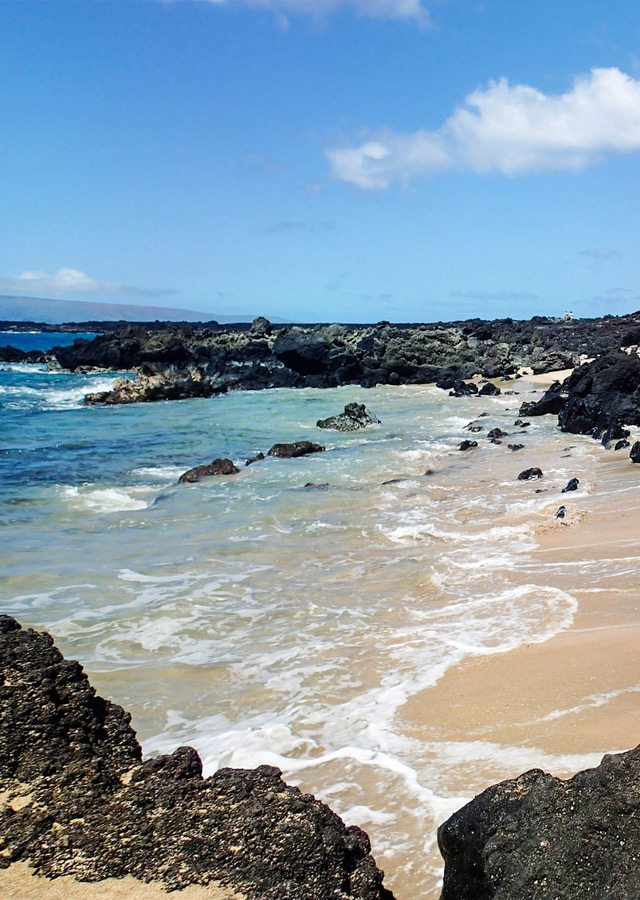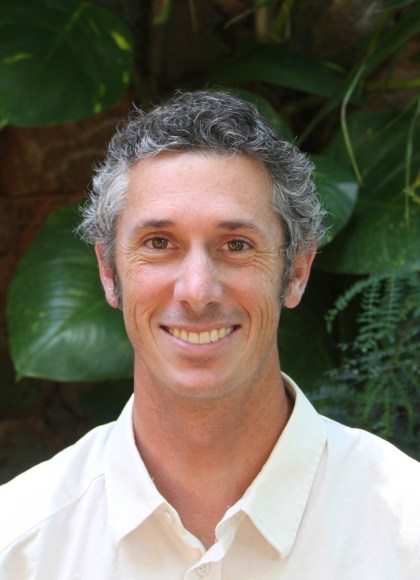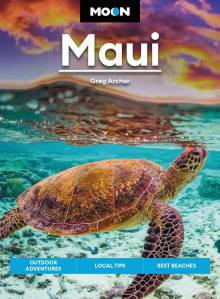Snorkeling South Maui: Makena and Beyond
Moving south from Wailea to Makena, you’ll notice that the terrain becomes just a little more raw. While Makena offers some of the south side’s best snorkeling, the entry and exit points can be a little more challenging than at Kihei or Wailea beaches. Makena is a little more exposed to southerly swell than the beaches to the north are, so not only is visibility affected, but the waves can sometimes crash into the lava rocks with such a fury it’s the last place you would want to find yourself. High surf is most typical in summer. During winter, nearly every day will be flat and calm.

Maluaka Beach and Maluaka Landing
The best place for beginner-level snorkeling in Makena is Maluaka Beach in front of the Makena Beach and Golf Resort. There’s a rocky point that wraps around the north end of the beach, and the entry from the sand into the water is gentle and forgiving.
While Maluaka might be the easiest place to snorkel in Makena, the best snorkeling overall can be found at Makena Landing. Getting in the water can be a little challenging here, but once you make it out past the shallow areas, you’ll be glad you made the effort. There are multiple entry and exit points for Makena Landing, the most common of which is the public parking area off Makena Road. To reach the parking area, drive along Makena Alanui until you reach Honoiki Street and the turn for Keawala‘i Church. When you reach the bottom of Honoiki, turn right, and follow the road for a quarter of a mile until you see a parking area on your left.

Once in the water, hug the coastline as it wends its way around the rocky point to the north, and when you have rounded the tip, you’ll notice there is a long finger of lava underwater that extends out toward Molokini. This is what’s known as the South Finger, and there’s a sea cave here that houses green sea turtles. This area is often referred to as Turtle Town by many of the snorkel boat operators, and unless you want to share the water with 200 other snorkelers, try to be out here before 10am when all of the Molokini charter boats begin mooring offshore. If you swim north from the South Finger, you will pass over lime green coral heads. Keep an eye out for moray eels or the strange-looking flying gurnard. Eventually, you’ll come to the North Finger, another underwater lava formation that houses many turtles. This finger is often covered in bright red slate-pencil urchins that the ancient Hawaiians would use for red dye, and eagle rays and manta rays are sometimes seen off the deeper end of the finger.
An alternate entry point for Makena Landing is via the north side at a spot known as Five Graves. Parking is scarce here, and the entry can be challenging, but it’s a much shorter swim to reach the fingers. The beach access is tough to find, however, so you need to pay close attention. Instead of turning into the parking lot on Makena Road, continue driving up and over the hill. When the road drops back down to the shoreline, you’ll notice a dirt area on the right that can fit about five cars. Park here. On the other side of the street you’ll notice a small trail. You’ll know this is the right path if you see five graves in a small graveyard on the left. Follow this trail to the shoreline. The easiest place to get in and out of the water is a protected nook in the rocks on your right. Although the beach area to the left of the trail looks like it would be the easiest, it’s shallow for a long way out, and you don’t want to contend with the breaking waves. On calm days this is the quickest means of reaching the fingers.
Newsletter Signup
By clicking ‘Sign Up,’ I acknowledge that I have read and agree to Hachette Book Group’s Privacy Policy and Terms of Use
Makena State Park
Moving south, there are a few places that offer decent snorkeling inside Makena State Park, the best of which is the point that separates Big Beach from Little Beach. The best thing to do is to park in the first entrance to Big Beach and turn right when you hit the sand. This will bring you to the far northern end of the beach where you can enter the water to snorkel around the point. The surf can get big here in the summer, so this is only possible on a flat day. For more direct access to the reef, clamber up and over the hill to Little Beach and snorkel in the cove off the left side of the bay. If there are waves in the bay, however, it’s best to go elsewhere because this will put you right in the path of oncoming boogie boarders.

Ahihi Kinau
Some say that the best snorkeling in South Maui is at Ahihi Kinau. But once popular spots such as the Fishbowl and the Aquarium are currently closed to the general public (with a possible reopening date in 2016). The only place where you can still snorkel in the Ahihi Kinau Natural Area Reserve is a small cove a mile past Pa‘ako Beach (Secret Cove). Even though the parking situation here can be abysmal, the snorkeling warrants the effort. If you’re not sure if you’re at the right place, the house number of the large estate just past the cove is 7750 and it has a large lava rock wall in front of it. While this cove is not within the dramatic lava flow like the other Ahihi spots, it is still a scenic area for finding reef fish and green sea turtles. Entry into the water can be difficult since you need to go over lava rocks, so on days when there are waves breaking all the way into the cove, find somewhere else to snorkel.

Dumps
On the other side of the hill from the Ahihi Kinau snorkeling area is a cove that’s referred to simply as Dumps. There’s a small gravel parking lot here just before the road begins its trek across the lava flow, and a short five-minute trail leads down to a rocky beach. While the snorkeling here can be good at times, there isn’t that much more to find here that you can’t see at any other South Maui snorkeling spot. The waves can get very large in summer, and you only want to snorkel here if the conditions are completely calm. To reach Dumps, travel 1.6 miles past the first entrance for Big Beach. Don’t leave valuables in your car; break-ins are an ongoing problem.

La Perouse Bay
Finally, just when you think that the road will never end, the asphalt gives way to a gravel parking lot in a spot known as La Perouse Bay. The lava field that you drive over en route to La Perouse is the remnants of Haleakala’s last eruption. The bay is named for the French explorer Jean Francois de Galaup Compte de La Pérouse, who in 1786 was the first European to set foot on the island of Maui in this very spot. As you enter the parking area, there’s a stone structure memorializing this event.
The snorkeling in La Perouse Bay can be phenomenal, although there are also times when it can be a total bust. Early mornings are best before the trade winds fill the bay with whitecaps, and summer can bring large surf, which turns the shoreline into a cauldron of white water. On calm days, however, the best snorkeling is found to the right of the parking lot where you must scramble across a lava rock point to reach the protected inlet. The water here is an enchanting color of turquoise against the young black lava rock.
Rental Shops
If you make it all the way down to Makena and realize that you left your mask back in your hotel, you can still rent equipment for the day at the beach activities center in front of the Makena Beach and Golf Resort.
Snorkeling Boats
Kai Kanani (808/879-7218) is the only option for snorkeling boats leaving from Makena. Only a few years old and still sparkling, it has all the added amenities you would expect from a luxury yacht with top-notch captains. Kai Kanani departs directly from Maluaka Beach in front of the Makena Beach and Golf Resort, which, if you’re staying in Makena, makes it a far more convenient option for sailing to Molokini than driving all the way to Ma‘alaea Harbor.
If Molokini was too crowded the last time you visited, Kai Kanani’s early-morning Molokini express charter ($63/adult) departs the beach at 6:30am and guarantees you’re the first boat at the crater. This trip is just over two hours long, and while its second trip of the day ($138/adult) visits the crater when it’s far more crowded, the fact that it’s four hours long as opposed to two allows for twice the amount of snorkeling time. If you’re concerned about getting seasick, the journey time from Maluaka Beach to Molokini is much shorter than the journey between Molokini and Ma‘alaea.
Newsletter Signup
By clicking ‘Sign Up,’ I acknowledge that I have read and agree to Hachette Book Group’s Privacy Policy and Terms of Use
Pin it for Later



